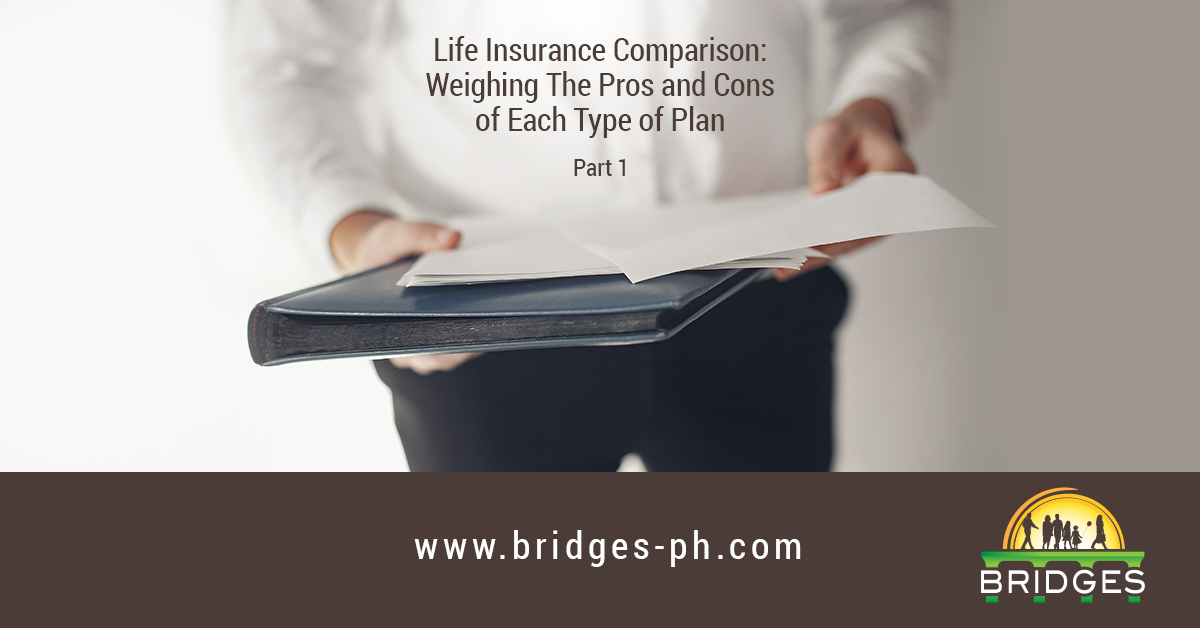
We probably don’t need to remind you how important having life insurance is. It protects the financial security of your loved ones and helps them pay any outstanding debts, allowing them to sustain the lifestyle you’ve given them even if you’re unexpectedly taken out of the picture.
Shopping for a plan, however, can be a bit tricky. The contracts that list and explain the benefits available are very technical and use a lot of legal jargon. Plus, there are different types of life insurance plans to consider, each one designed for varying needs.
Don’t worry, though, we’re helping you find the perfect plan for your very own needs by breaking down each of the different types of life insurance and highlighting their pros and cons in an easy-to-digest manner.
Before all that, we first want to define the important benefits and features that may or may not come with each type of plan. We’ll be using these to characterize and compare one plan from another as we go through each type one by one in this multi-part blog series.
Death Benefits
The death benefit is the most fundamental benefit of life insurance and is likely the reason why you’re buying a plan in the first place. It’s the sum of money that the insurer pays your loved ones upon your passing, granted that your plan is in force when it happens.
Your plan also has a face amount, the initial amount that you select when you first apply for your plan, essentially your coverage. But your death benefit is not always equivalent to your face amount; it could be higher or lower, depending on your plan.
For example, the death benefit of some plans include dividends, which can increase the amount to be paid out. In some cases, the death benefit can be lower, if, say, you took out a loan from it. You’ll learn more about how the amount changes as we move on to the other benefits and features.
Premiums
Obviously, to continue to enjoy coverage, you’ll have to pay premiums. There are several classifications of life insurance premiums, but what’s common among all of them is that they’re calculated based on your risk of dying. In life insurance, the general rule is that the less likely you are to die, the less premiums you pay and vice versa.
For the most part, premiums are either leveled or increasing. Leveled means that the cost of premiums stays the same throughout the entire paying period of your plan. Increasing, as you can already tell from its name, means your premiums become more expensive as time passes.
Grace Period
Let’s say, for whatever reason, you forget to pay your premium and it’s past the due date. Well, don’t panic just yet. One of the main features of life insurance plans is that they typically have a grace period that lets you hold on to your coverage until you’re able to pay. The grace period for the majority of plans is 30 to 31 days, though you shouldn’t always assume that that number applies with every insurer or to all types of plans.
Paying Period
Your plan’s paying period is the number of years you have to pay premiums. Traditional plans commonly have a guaranteed paying period, meaning that you know exactly how long you’ll be paying premiums. There are also plans that stretch it out to make it easier for you to pay while others are equivalent to the plan’s maturity.
Don’t be confused, however, you don’t have to complete all the payments before benefits are paid to you or your beneficiary. Once you pay the initial premium and all the forms are signed, your plan immediately takes effect.
Riders
Riders are add-on terms that let you enjoy more benefits and coverage on top of your standard policy, which usually comes at additional costs. Like when you ask for an extra shot of espresso when you order a latte at Starbucks.
They’re sold at the same time you buy your insurance policy. Some examples of what riders cover include accidental deaths, disability, and critical illness.
It’s worth mentioning that riders don’t come in the same packages. For instance, you can avail of a rider that could expire before the paying period for your life insurance is up.
They’re also completely optional. You can purchase your plan without them if you want; it’s really up to you.
We’re cutting the list here for this week’s blog. We have five more benefits and features to talk about so be sure to check back next week for the continuation.
linkiNG you to opportunities,

photo from www.freepik.com
READ MORE:
- Health Insurance Options: Finding The Perfect Plan For Your Needs – Part 1
- Growing Together: Monetary Incentives To Engage Your Team
- How To Effectively Manage Your Finances During Marriage - Part 1
- Staying Ahead of Life and Death Stakes During the Pandemic – Part 1
- Life Insurance: Preparing for the Inevitable
- How You Can Secure Your Family’s Future From Life’s Uncertainties
- Preparing For Marriage: Priorities, Discipline, and Expectations


